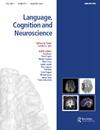两个负片等于一个正片吗?语言处理中的语言与逻辑
IF 1.6
3区 医学
Q2 AUDIOLOGY & SPEECH-LANGUAGE PATHOLOGY
引用次数: 1
摘要
摘要本研究关注一个已知会增加句子处理复杂性的因素——否定。我们试图从否定中提炼出一个逻辑性质——推理反转——看看它是否决定了这种复杂性,而不是一个真正的否定词。首先,我们在希伯来语中测试了一对无否定的极性算子(最多,至少)。我们发现,最多包含推理反转的句子的处理时间落后于最少包含推理反转句子的句子。其次,我们将包含两个推理反转运算符(不少于)的句子与包含零(ø,more)和一(不多于,less)的句子的处理进行了比较。由于两个推理反转运算符会取消推理反转(“两个负数等于一个正数”),我们询问他们的处理成本是无效的,还是累积的。令人惊讶的是,RT不少于RT不多于RT。这些发现得出的结论是,即使在隐蔽的情况下,推理逆转也是处理复杂性的重要决定因素。本文章由计算机程序翻译,如有差异,请以英文原文为准。
Do two negatives make a positive? Language and logic in language processing
ABSTRACT This study focuses on a factor known to increase sentence processing complexity – negation. We sought to distill out of negation a logical property – Inference Reversal – to see whether it, and not an actual negation word, determines this complexity. First, we tested a negation-less pair of polar operators (at most, at least) in Hebrew. We found that processing time for sentences containing the Inference Reversing at most lagged behind those with at least. Second, we compared the processing of sentences containing two Inference Reversing operators (not less) to sentences with zero (ø, more) and one (not more, less). Since two Inference Reversing Operators annul Inference Reversal (“two negatives make a positive”), we asked whether their processing cost is annulled, or rather cumulative. Surprisingly, RT not less was shorter than RT not more . These findings lead to the conclusion that even when covert, Inference Reversal is an important determinant of processing complexity.
求助全文
通过发布文献求助,成功后即可免费获取论文全文。
去求助
来源期刊

Language Cognition and Neuroscience
AUDIOLOGY & SPEECH-LANGUAGE PATHOLOGY-BEHAVIORAL SCIENCES
CiteScore
4.50
自引率
13.00%
发文量
70
期刊介绍:
Language, Cognition and Neuroscience (formerly titled Language and Cognitive Processes) publishes high-quality papers taking an interdisciplinary approach to the study of brain and language, and promotes studies that integrate cognitive theoretical accounts of language and its neural bases. We publish both high quality, theoretically-motivated cognitive behavioural studies of language function, and papers which integrate cognitive theoretical accounts of language with its neurobiological foundations.
The study of language function from a cognitive neuroscience perspective has attracted intensive research interest over the last 20 years, and the development of neuroscience methodologies has significantly broadened the empirical scope of all language research. Both hemodynamic imaging and electrophysiological approaches provide new perspectives on the representation and processing of language, and place important constraints on the development of theoretical accounts of language function and its neurobiological context.
 求助内容:
求助内容: 应助结果提醒方式:
应助结果提醒方式:


